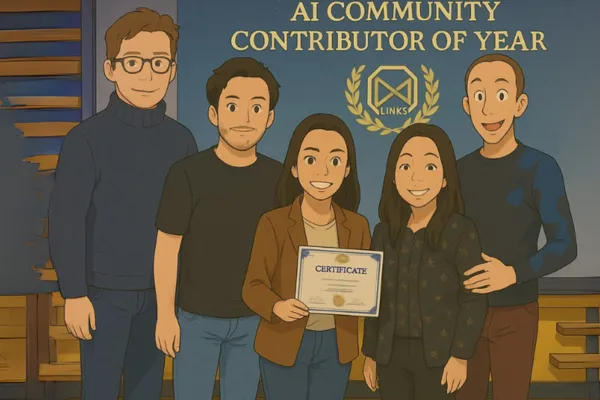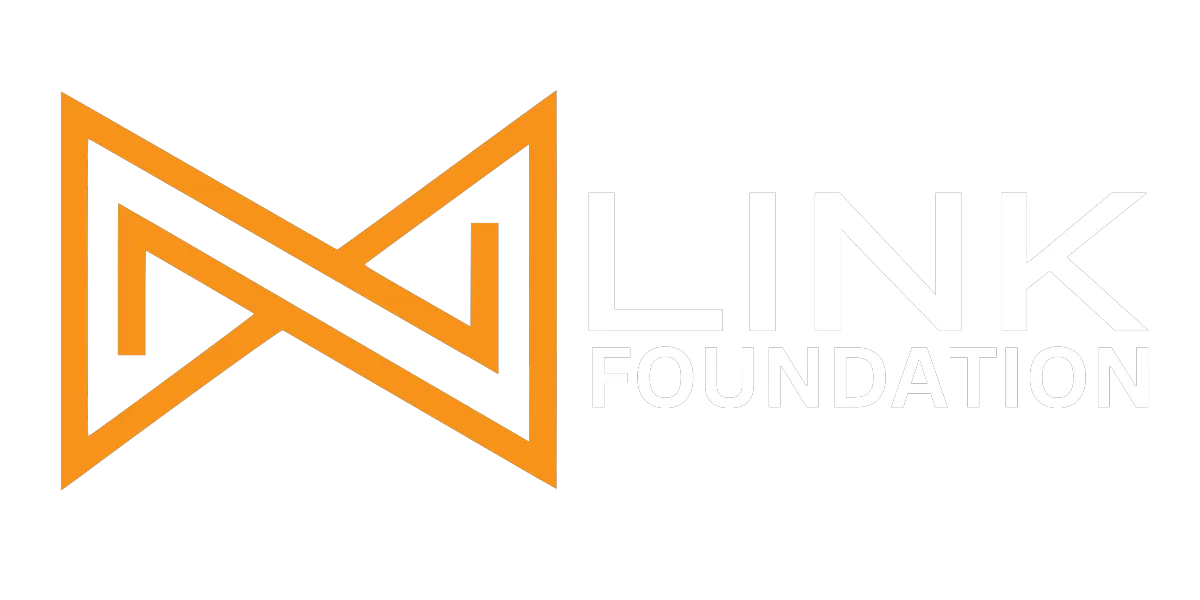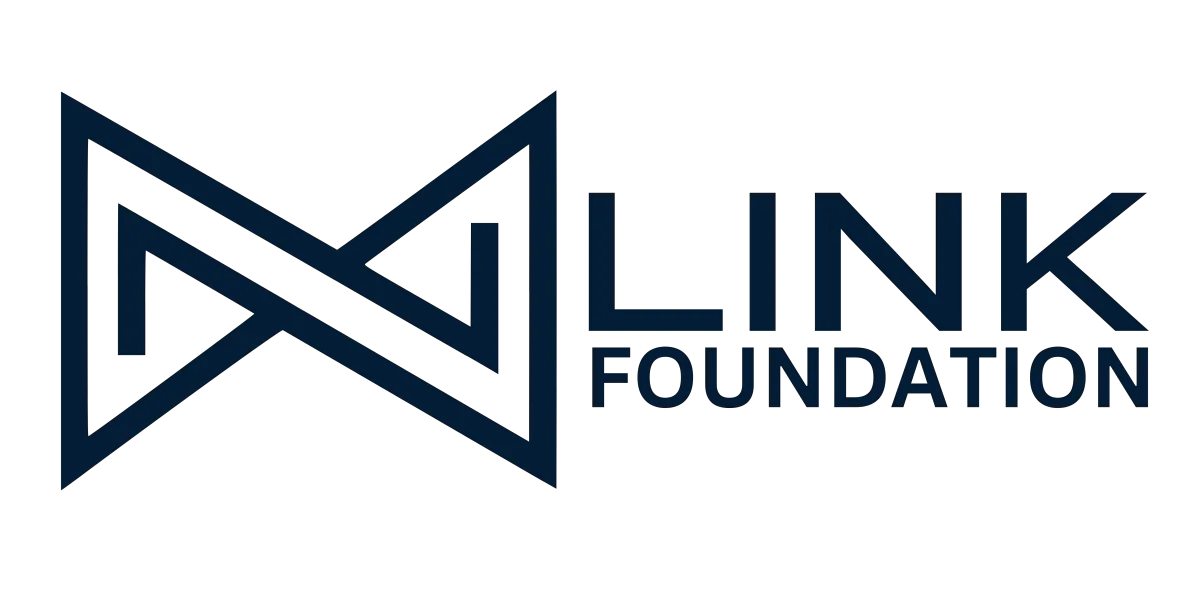
The Big Leap: How to Prepare for What’s Coming with AI
⏱️ Estimated reading time: 4–5minutes
💡 Artificial intelligence is rapidly transforming the world around us. New, increasingly powerful tools are automating complex processes, disrupting entire industries, and changing how we work, live, and connect—faster than most of us ever imagined.
What’s coming isn’t just a tech upgrade—it’s the beginning of a new era.
One that challenges us to reflect, act with intention, and build a future where technology strengthens our communities and improves life for all.
If you’ve been paying attention to social media, you’ve probably seen these kinds of images everywhere.

🏆 Image generated with GPT Images from a real photo of the award received by Link Foundation as AI Community Contributor of the Year, granted by the AI Innovation Council of Charlotte.
In April 2025, OpenAI—the company behind ChatGPT—launched a new AI tool called ChatGPT Images that took the world by storm. This tool’s power lies in creating images that look stunning and convey ideas with pinpoint accuracy. You can ask for a menu, an invitation, or a poster, and it delivers the right text and style—just within a simple chat. It’s like having a graphic designer who perfectly understands your vision and works in seconds.
Within days, millions of users went viral by transforming their creations into a Studio Ghibli–inspired style. While it may seem like another tech trend, we’re witnessing how AI will reshape fields like design, marketing, and advertising—and spark debates around copyright and the future of work.
Over the past weeks, competition between Chinese and U.S. companies to lead in AI has intensified dramatically. We’re seeing a new generation of AI emerge: more powerful, more autonomous, and capable of rapid evolution that promises to transform entire sectors of the economy.
Why This Moment Matters

💡 This image is from the blog Wait But Why, a highly recommended read to better understand the risks, potential, and impact of artificial intelligence on the future of humanity
Think back to when the internet first showed up in the ’90s. It started as a fun curiosity—maybe you used it to check email or play simple games. But before long, it completely changed how we work, shop, and stay in touch with friends and family.
Today, AI is at that same crossroads—but the changes are coming at lightning speed.
From simple helpers to super‑assistants
Until now, AI has done specific chores: suggesting what to watch next, filtering spam, or recognizing faces in photos. Soon, it will plan entire projects, learn new skills on its own, and even run software like a super‑smart assistant.Two things happen when big shifts arrive:
Tough questions pop up about jobs, privacy, and fairness—because powerful tools always come with responsibilities.
Great opportunities open for anyone willing to learn and adapt—the businesses and people who embrace these tools early will lead the way.
We’re standing at that tipping point. The choices we make now will shape our work, our communities, and our future.
My Experience as an Entrepreneur
In my day‑to‑day work as a marketer, tasks that once took days of product and brand research, months of strategy development, and thousands of dollars now happen in a fraction of the time—and with a much smaller team. Thanks to AI, I can go to market faster, iterate on ideas rapidly, and continuously optimize every aspect of a campaign.
Deeper research, at scale: AI tools let you gather richer insights on customers and competitors—running hundreds of experiments in parallel—so you can refine your strategy with data, not guesswork.
Content creation on demand: What used to require a full design and copy team now happens in minutes, allowing you to produce dozens of visuals and messages, test variants, and double‑down on what works.
Cost and efficiency gains: By automating repetitive tasks and analyzing real‑time performance, you optimize budgets, cut wasted spend, and free your team to focus on high‑impact work.
This isn’t just faster—it’s a game‑changer for entrepreneurs. Small ventures can now punch above their weight, enjoying the competitive advantages of big‑budget research and content factories—but at a fraction of the cost and time.
Agile Growth and Shared Responsibility
AI gives small teams, and local business the same tools once reserved for big companies. It makes it easier to test ideas, build projects, and reach more people—with fewer resources and in less time. (christmas for an entrepreneur)
But with that power comes a shared responsibility. If we’re not intentional, AI could deepen inequality and leave more people behind.
The goal isn’t just faster growth—it’s smarter growth that includes more voices, stronger local communities, and more opportunity for all.
Preparing for the AI Future Together
At Link Foundation, we believe now is the time to start asking ourselves deeper, more meaningful questions about the future we want to build—and the systems and strong local communities we need to make that possible.
Right now, before we take this big leap as Humanity, we need to pause and ask ourselves—what does it mean to create tools this powerful? This is a moment to reflect—together as a society—on how we want to live with these technologies, and how we can ensure they’re used to build a better, fairer future for all.
When I joined the leadership team at Link, what moved me most was this vision: to create a space for awareness, learning, and meaningful action—where anyone can use AI to improve their life, their business, and their community.
I wrote this article as an open invitation—to think, imagine, and act alongside me.
This Is Our Moment
We’re standing at the edge of a big leap. You can watch from the sidelines… or you can join the conversation and help shape this new era.
Subscribe to our newsletter—we’ll be sharing powerful ideas, real stories, and honest reflections on the opportunities and risks of AI. Let’s explore what’s possible, together.





